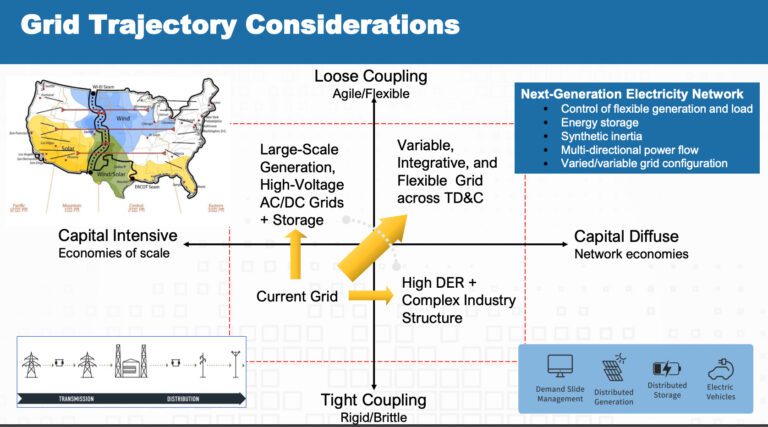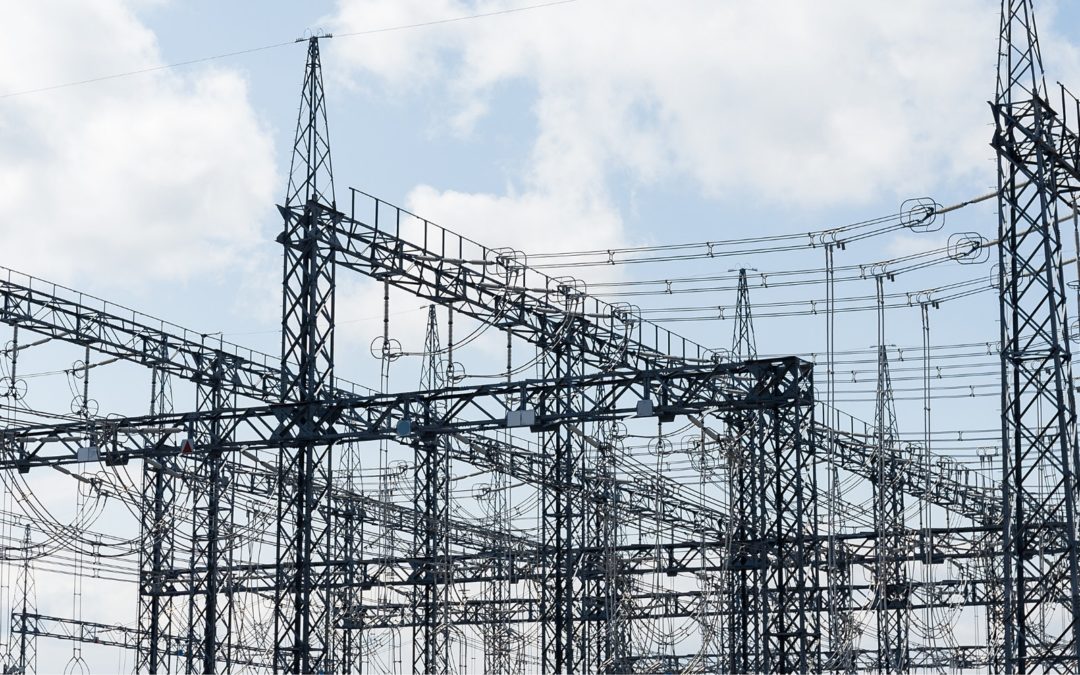 Michael Pesin, deputy assistant secretary for the Advanced Grid Research and Development division in the U.S. Department of Energy’s Office of Electricity, recently gave a talk on the transformation of the grid to make it more DER-friendly and he included a really useful graphic. His talk relates also to a symposium held by DOE on the future of the grid, where you can dig deeper on the topic.
Michael Pesin, deputy assistant secretary for the Advanced Grid Research and Development division in the U.S. Department of Energy’s Office of Electricity, recently gave a talk on the transformation of the grid to make it more DER-friendly and he included a really useful graphic. His talk relates also to a symposium held by DOE on the future of the grid, where you can dig deeper on the topic.
Basically, he sees the grid going from a rigid, capital-intensive architecture to a more flexible and “capital diffuse” one where more than just utilities invest in the grid. He sees five elements in the “Next-Generation” grid, shown in the blue box in his graphic. I would add a sixth—a very robust cybersecurity system. In the transformation he describes, there would be much more communication infrastructure to support monitoring and control and the integration of lots of equipment owned by parties other than the utilities. This new structure is ripe with opportunity for cyber-attack, compared to the conventional system that is more analog and closely held. Another change implied by his list (flexible generation and load, multi-directional power flow) is the strong possibility that the broad AC network will be broken up into more clusters of load behind an AC-DC-AC link. That would add a lot of ability to control DER and eliminate some of the burdens it places on the larger distribution grid. Those links at a small scale are expensive. Anyone want to innovate a much lower cost back-to-back small converter? See any other innovation opportunities associated with his view? Lots of software innovation needed. Lots of communication systems needed. Take heed.

Source: DOE

ABOUT THE AUTHOR
Gary Simon is the Chair of CleanStart’s Board. A seasoned energy executive and entrepreneur with 45 years of experience in business, government, and non-profits.
CleanStart Sponsors
Weintraub | Tobin, BlueTech Valley, Revrnt,
Moss Adams, PowerSoft.biz, Greenberg Traurig, Momentum,
College of Engineering & Computer Science at Sacramento State


